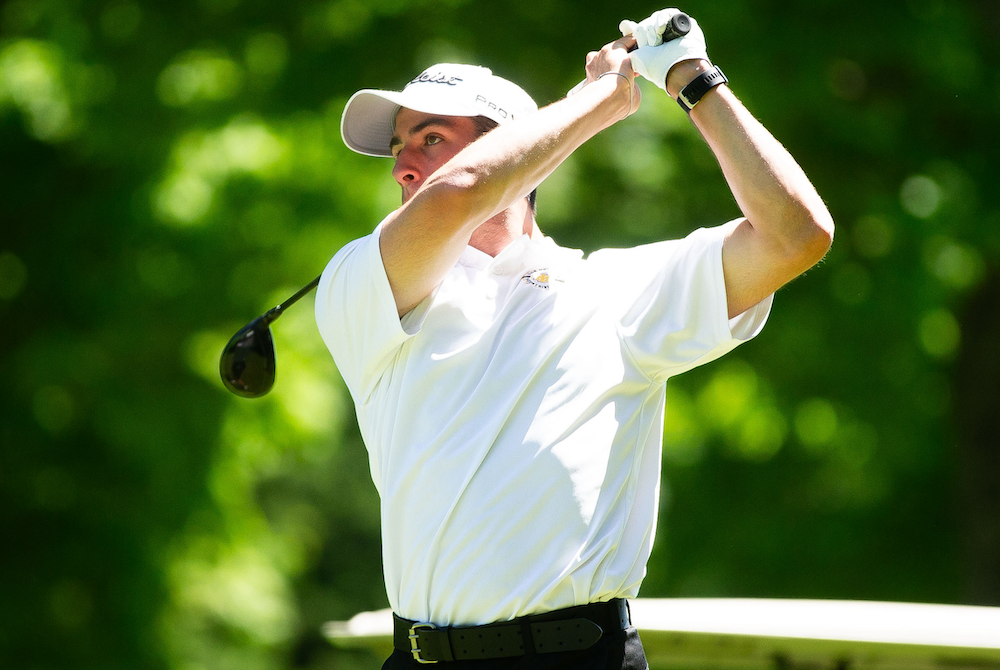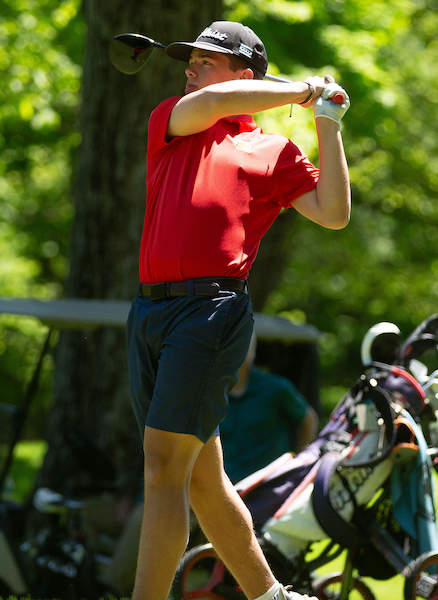
Casting Lines for Future Tournaments
August 12, 2016
By Jack Roberts
MHSAA Executive Director
The MHSAA is best known to the public for the tournaments it conducts to conclude the fall, winter and spring seasons each school year.
These tournaments, the first and largest program of the MHSAA, have survived the Vietnam War, the Korean conflict and two World Wars. They have survived the technology bubble, the housing collapse, the energy crisis and the Great Depression.
MHSAA tournaments existed at the dawn of aviation and at the time of our nation’s lunar landing. Popes, presidents and governors have changed and changed again and again, and MHSAA tournaments roll on year after year.
But the sense of tradition and permanence and inevitability of MHSAA tournaments doesn’t dissuade us from asking questions about our tournaments, even some of the most basic questions. Here are two.
Question #1
I have long been and will always be an advocate for a Ryder Cup format for the MHSAA Golf Finals, and a team tennis approach to the MHSAA Tennis Finals; but 90 years of tradition is hard to overcome. Might this be a more exciting format? Could it be co-ed? Could it reverse the decline in boys tennis participation, and increase girls golf participation? Wouldn’t it be fun to try?
Periodically, the International Olympic Committee requires each of the designated Olympic sports to defend its status, to state its case why the sport should remain a part of the Olympic program. Then, after a series or votes that retain one sport at a time, the IOC drops the sport that makes the weakest case. It does so to make room for one of the previously unlisted sports that makes the best case for inclusion.
This would appear to keep the existing Olympic sports on their toes, and to keep the Olympic movement fresh and reflective of modern trends in sports.
While I would not enjoy the controversy, I can see the potential for some positive results if the MHSAA were to invoke the same policy for determining the 14 tournaments it will provide for girls and the 14 for boys.
This might cause us to consider more deeply what a high school sport should look like, or at least what an MHSAA tournament sport should stand for.
On the one hand, we might be inclined to drop tournaments for those sports that involve mostly non-faculty coaches and non-school venues, or require cooperative programs to generate enough participants to support a team, or resort almost entirely to non-school funding, or cater to individuals more than teams.
Or perhaps this process would cause policymakers to forget traditional thinking and ask: “In this day and age, should we shake off traditional notions of sport and consider more where modern kids are coming from?” That might mean fewer team sports and more individual sports, more “extreme” sports like snowboarding and skateboarding, and more lifetime sports, meaning not just golf and tennis and running sports, but also fishing and even shooting sports.
Currently, MHSAA policy states that the MHSAA will consider sponsorship of a tournament series for any sport which 64 member schools conduct on an interscholastic basis as a result of action by the governing boards of those schools.
Should the only question be how many schools sponsor a sport, or must an activity also have certain qualities and/or avoid certain “defects?” What should an MHSAA tournament sport look like and stand for?
Question #2
Bristling from criticism that his association is a money-grabbing exploiter of children, my counterpart in another state said, “If we were running our programs just to make money, we would do very many things very differently.” I knew exactly what he meant.
Because we care about the health and welfare of students, because we mean what we say that the athletic program needs to maximize the ways it enhances the school experience while minimizing academic conflicts, and because we try to model our claim that no sport is a minor sport when it comes to its potential to teach young people life lessons, we operate our programs in ways that make promoters, marketers and business entrepreneurs laugh, cry or cringe.
If money were the only object, we would seed and select sites to assure the teams that attracted the most spectators had the best chance to advance in our tournaments, regardless of the travel for any team or its fan base. If money were the only object, we would never schedule two tournaments to overlap and compete for public attention, much less tolerate three or four overlapping events. If money were the only object, we would allow signage like NASCAR events and promotions like minor league baseball games.
Those approaches to event sponsorship may not be all wrong; they’re just not all right for us. And we will live with the consequences of our belief system.
During a typical school year, more than 20 percent of the MHSAA’s 2,097 District, Regional and Final tournaments lose money. Not a single site in golf, skiing or tennis makes a single penny. In no sport did every District, Regional and Final site have revenue in excess of direct expenses.
In fact, in only three sports – boys and girls basketball and football – is revenue so much greater than direct expenses overall that it helps to pay for all the other tournaments in which the MHSAA invests.
That’s right: invests. When we present our budget to our board, we talk about the MHSAA’s investment in providing tournament opportunities in all those sports and all those places that cannot sustain the cost of those events on their own. How much is this investment worth to students, schools and society?
These two are core questions that require our focus far in advance of talk about scheduling, site selection, seeding and the myriad matters that too often hijack our time and attention.

Iron Mountain's Pigeon Holds On to Finish 1st, Hancock Claims Team Title
By
Jason Juno
Special for MHSAA.com
May 29, 2024
CRYSTAL FALLS – Iron Mountain junior Cooper Pigeon started Wednesday’s Upper Peninsula Division 2 Final with a birdie.
He made sure the rough patch that followed was short lived – and it’s a good thing he did, because Hancock’s Jackson Sintkowski made sure there wasn’t much margin for error.
Pigeon carded a 76, a single stroke ahead of Sintkowski, to win the medalist honor at Young’s Golf Course.
“He has the mindset that he doesn’t let that bother him,” Iron Mountain coach Steve Flaminio said. “He turned it around and got a couple birdies and righted the ship. He figured it out like he always does and started playing pretty strong.”
It wasn’t an easy course, nor was it a perfect day to golf. The sun was out, but it was windy, which could exaggerate any minor errors, Pigeon said.
Some of the pin placements were tough, Flaminio said, and the greens were super fast – Flaminio watched kids three and four putt many times throughout the day.
“There were some young guys out there struggling. Cooper figured it out, and that was key,” he said.
The Finals title was Pigeon’s first. He knew he had a chance to win after shooting a 73 in his last round at this course.
 “But you have to play well, and you can’t get ahead of yourself,” he said.
“But you have to play well, and you can’t get ahead of yourself,” he said.
The bulk of the U.P. summer awaits him and he plays golf almost daily, so he could certainly be a force to be reckoned with next season as well.
“It’s sweet; hopefully we can get another one next year,” Pigeon said.
Flaminio said the rest of the team was excited for their individual champ because they can see how hard he works at his craft.
“So to see him come home as medalist in the U.P. is pretty awesome,” he said.
Sintkowski, the runner-up from Hancock, did leave with some hardware himself as he led the Bulldogs to their first U.P. Finals team title since they won Division 2 back-to-back in 2013 and 2014.
He was one of four Bulldogs to finish among the top 10 individuals – Bryce Hanner placed fifth with an 83, Kirby Storm was sixth with an 86 and Drew Sturos tied for 10th with an 88.
Hancock competes in the Western Peninsula Athletic Conference, where it finished runner-up to Division I Houghton throughout much of the season. That doesn’t mean the Bulldogs have been golfing poorly.
“The kids have been playing well all year,” Hancock coach Paul Sintkowski said.
The Bulldogs came into this tournament with the lowest team average, so they considered themselves the favorites and lived up to that high expectation.
“We had the guys to get it done today, but you still got to get it done,” said Sintkowski, who earned his first U.P. team title in nine years of coaching. “They got it done today. I’m real proud of these guys.”
Hancock was led by the West-PAC Player of the Year, Jackson Sintkowski, a junior. And their team got a big boost this season when Hanner decided to join the golf team.
“Bryce Hanner was a nice addition to our team this year,” Coach Sintkowski said of the senior. “He decided to play golf this year, and that really bolstered our lineup down the stretch. It gave an extra solid player where we could always count on a good score for him.”
Painesdale Jeffers finished as the team runner-up, 15 strokes behind Hancock, 333-348. St. Ignace was third, Iron Mountain fourth and Munising fifth.
Owen Kuehnau of Stephenson carded an 81 to take third place individually, and St. Ignace’s Sawyer Graham was fourth with an 82.
PHOTOS (Top) Iron Mountain's Cooper Pigeon drives on No. 14 at Young’s Golf Course on Wednesday. (Middle) Hancock’s Jackson Sintkowski follows his drive on the same hole. (Photos by Jason Juno.)

